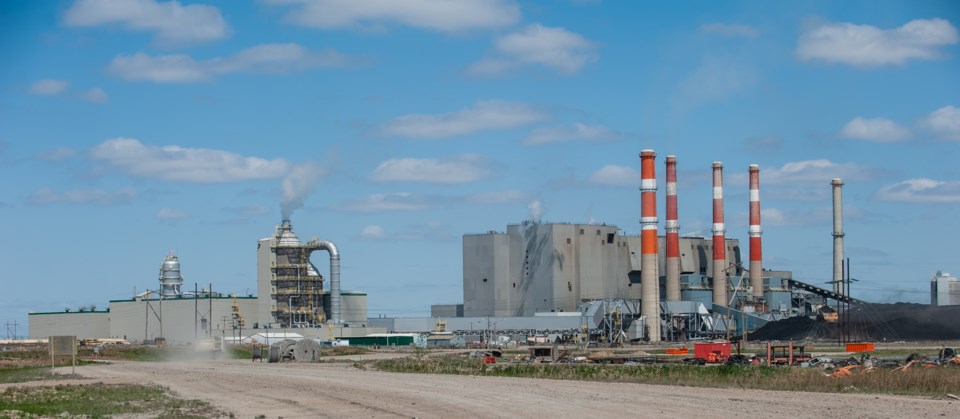When I first came to Estevan 10 years ago, the mayor at the time explained to me that one of Estevan’s greatest strengths was that it had multiple key industries. It had agriculture, like pretty much all of Saskatchewan. But it also had oil, coal, and power generation.
That is an incredibly strong industrial base for any community, I would think, and so did he.
And now, three of those four principle industries are under direct threat and the fourth will not go unscathed, either. The villain here, in all these cases, are the climate change policies of the federal Liberal government under Prime Minister Justin Trudeau. That includes its intention to rid Canada of conventional coal-fired power production (despite hundreds of years of coal reserves), and the imposition of the carbon tax.
I spoke to one of the top realtors in town a few weeks ago. She told me that the value of homes in Estevan has dropped by about 25 per cent. She attributes half of that to the oil downturn, and the other half to what is going on with SaskPower. In other words, a very large part of the equity in our home, and the homes of most everyone else, has now been wiped out.
In mid-December, new regulations for coal-fired power generation were gazetted, or formalized, if you were, by the federal government. They obliquely refer to the shutting down of Boundary Dam Power Station Units 4 and 5 by the end of 2019.
Each of those produces about 150 megawatts. We should also remember that Units 1 and 2, retired a few years ago, each produced 75 megawatts. Using rough numbers, Boundary Dam used to produce almost 900 megawatts of power, give or take. It will soon be reduced to roughly half of that. While the approximately 300 megawatt Shand Power station is not affected, yet, the big question is, will it have to shut down at the end of 2029, or 2043? Right now it’s looking like 2029.
The Boundary Dam Unit 3 Carbon Capture and Storage Project promised to breath new life into coal. But it cost $1.5 billion, and reduced the output to about 125-130 or so net megawatts of output. That should give Boundary Dam decades more usage. Unit 3 is exempt from the 2019 and 2029. However, carbon capture and storage is not being implemented on Units 4 and 5, as had been broadly expected. If it is to be put onto the Shand Power station, it won’t be complete until 2029.
SaskPower has been asking for an “equivalency agreement” which would allow it to spread is carbon capture reductions from BD3 across the fleet. This province has been asking since at least 2012 (including when both Stephen Harper and Brad Wall were in power, I might add). We still don’t have an answer. I am saying today, if we don’t have it by now, we never will. I hope I’m wrong.
Does anyone really expect three draglines, or any draglines, to be kept going, if Boundary Dam is reduced to just one unit, and if Shand is shut down in 2029? Probably not. That would likely mean the end of coal mining in Estevan, something this community has done for over a century.
Additionally, oil is under assault by the Liberal government in numerous ways. Killing the Northern Gateway and Energy East pipelines were unforgiveable actions which are now causing great pain. A carbon tax, which will incrementally ratchet up over time, is just another nail in the coffin, for both oil and coal.
While there may be some exemptions from the carbon tax for some agricultural usage, that sector, too, will feel pain, like when semis are used to haul grain to market. And who knows what the impact will be on inputs like fertilizer?
In Estevan, coal, power, and oil and all inexorably linked. The coal is burned to create power, and some of the captured CO2 is used to produce more oil in the Weyburn unit through enhanced oil recovery.
If and when Estevan loses coal and power, it will lose a huge part of the community’s economy – some of the best paying, most stable parts of it. Irreplaceable parts. No wonder the realtor basically told me my house lost $100,000 in value. I should point out that’s $100,000 thus far. There’s a lot more bleeding likely to come.
Small wonder then when a truck convoy protest was planned on a Thursday to take place less than 48 hours later, 427 units came, not just from Estevan, but all around. The Trudeau policies are not only threatening the wellbeing of Estevan, they are literally taking dollars of equity out of every person’s pocket, each and every day.
Let me be perfectly clear: everyone in Estevan is becoming poorer, by the day, because of Trudeau.
That is why people are mad. And if they aren’t mad yet, they should be. Is your town next?
Brian Zinchuk is editor of Pipeline News. He can be reached at [email protected].
See related story, Unless something changes, new gazetted regulations may seal the fate of Boundary Dam Units 4 and 5.




